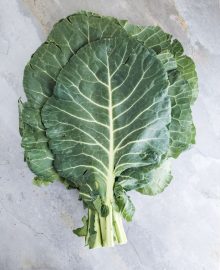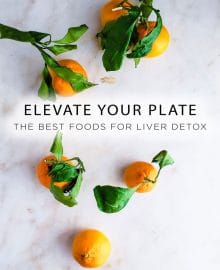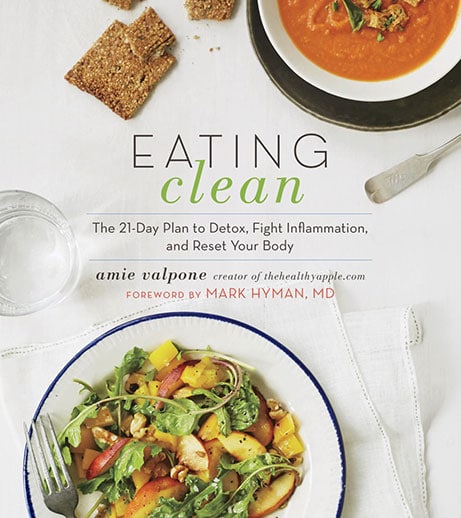Whether appearing on a package of eggs in your grocery store or listed on a menu in your favorite restaurant, words such as ‘free range’, ‘grass fed’, ‘natural’ and ‘organic’ are everywhere you look. Many food labels can be quite confusing, therefore I have compiled a list of food claims and what they truly mean–this way you can educate yourself about where your food is coming from and how it has been produced. Below is a list of the most common food claims as well as farming practices.

Food Claims
Antibiotic Free
-
The following phrases may be seen on food from an animal that was not given antibiotics during its lifetime: ‘No antibiotics administered’, ‘Raised without antibiotics’ or ‘Antibiotic free.’
Free Trade
- This label means that farmers and workers in developing countries have received a fair wage and worked in decent conditions while growing and packaging the product.
Free Range
- The use of the terms ‘Free rage’ or ‘Free roaming’ are only defined by the USDA for egg and poultry production. The label can be used as long as the producers allow the poultry access to the outdoors so they are able to engage in natural behaviors. It does NOT necessarily mean that the products are cruelty-free, antibiotic-free or that the animals spent the majority of their time outdoors. Claims are defined by the USDA, but are not verified by third-party inspectors.
GMO Free
- Products can be labeled ‘GMO-Free’ if they are produced without being genetically engineered through the use of GMO’s (Genetically modified organisms). Genetic engineering is the process of transferring specific traits or genes from one organism into a different plant or animal.
Grain Fed
- Animals raised on a diet of grain are labeled as ‘Grain fed.’ If you are a vegetarian, be sure to check the label for ‘100% Vegetarian Diet’ to ensure the animals were given feed containing no animal by-products.
Grass Fed
- Animals were fed grass rather than grain. They should not be supplemented with grain, animal by-products, synthetic hormones, or given antibiotics to promote growth or prevent disease, although they may have been given antibiotics to treat disease. A ‘Grass-fed’ label does not mean the animal necessarily ate grass its entire life. Some grass-fed cattle are ‘Grain-finished’, which means they ate grain from a feedlot prior to slaughter.
Healthy
- Foods labeled ‘Healthy’ must be low in fat and saturated fat and contain limited amounts of cholesterol and sodium. These foods must also contain at least 10% of one or more of vitamins A or C, Iron, Calcium, Protein or Fiber.
Heritage
- A ‘Heritage’ label describes a rare and endangered breed of livestock and crops. Heritage animals are prized for their rich taste, and they usually contain a higher fat content than commercial breeds. These animals are considered purebreds and a specific breed near extinction. Production standards are not required by law, however, true heritage farmers use sustainable production methods. This method of production saves animals from extinction and preserves genetic diversity.
Hormone Free
- The USDA has prohibited use of the term ‘Hormone Free’, however animals that were raised without added growth hormones can be labeled, ‘No Hormones Administered’ or ‘No Added Hormones.’ By law, hogs and poultry cannot be given any hormones. If the products are clearly labeled, ask your farmer or butcher to ensure that the meals you are purchasing are free from hormones.
Natural
- Currently, there are no standards that exist for this label except when used on meat and poultry products. USDA guidelines state that ‘Natural’ meat and poultry products can only undergo minimal processing and cannot contain artificial colors, artificial flavors, preservatives or other artificial ingredients. However, ‘Natural’ foods are not necessarily sustainable, organic, humanely raised, or free of hormones and antibiotics.
Non-Irradiated
- This label means that the food has not been exposed to radiation. Meat and veggies are sometimes irradiated to kill micro-organisms and reduce the number of microbes present due to unsanitary practices. No thorough testing has been done to know whether irradiated food is safe for human consumption.
Pasture Raised
- This label indicated the animal was raised on a pasture and that it ate grasses and food found in a pasture, rather than being fattened on grain in a feedlot or barn. Pasturing livestock and poultry is a traditional farming technique that allows animals to be raised in a humane, ecologically sustainable manner. This term is very similar to ‘Grass fed’ though the term ‘Pasture-raised’ indicated more clearly that the animal was raised outdoors on a pasture.
Organic
- All organic agricultural farms and products must meet the following guidelines, which are verified by a USDA approved independent agency:
- Abstain from the application of prohibited materials, including synthetic fertilizers, pesticides and sewage sludge, for 3 years prior to certification and then continually throughout their organic license.
- Prohibit the use of genetically modified organisms (GMO’s) and irridation.
- Employ positive soil building, conservation, manure management and crop rotation practices.
- Provide outdoor access and pasture for livestock.
- Refrain from antibiotic and hormone use in animals.
- Sustain animals on 100% organic feed.
- Avoid contamination during the processing of organic products.
- Keep records of all operations.
- If a product contains the ‘USDA Organic’ seal, it means that 95 to 100% of its ingredients are organic. Products with 70-85% organic ingredients can still advertise ‘Organic’ ingredients on the front of the package, and products with less that 70% organic ingredients can identify them on the side panel. Organic foods prohibit the use of hydrogenation and trans fats.
Transitional
- The term ‘Transitional’ may be seen on foods from a farmer or grower in the process of convertising to organic practices but have not yet completed the full transition. These foods may also be labeled ‘Pesticide Free.’
Wild Game
- Contrary to the label, almost all ‘Wild Game’ found in restaurants are farm-raised. Farm-raised wild game tend to have a milder flavor than truly wild game.

Farming Practices
Biodynamic
- Biodynamic farming is based on the work of Austrian scientist and philosopher Rudolf Steiner. Meeting the requirements of organic farming, biodynamics goes further by working consciously with the life forces inherent in nature. Through studying the qualities of certain plants and animals, different preparations are spread over the land in homeopathic amounts, to bring into balance and enhance the life forces of the farm. The knowledge of planetary cycles and constellations also attributes to the planting or breeding processes and fertilizing practices, governing the life of the plants and animals produced for consumption.
Conventional
- Refers to standard agricultural and husbadry practices developed from the introduction of modern technological advancements. Conventional farming ideas arose from the industrial revolution and the natural scientific community.
GMOs (also referred to above)
- Genetically Modified Orgnisms (GMOs) are plants and animals that have had their genetic make up altered to exhibit traits that are not naturally theirs. In general, genes are taken (copied) from one organism that shows a desired trait and transferred into the genetic code of another organism.
Integrated Pest Management (IPM)
- A pest management strategy that uses knowledge about insects and their reproductive and flight cycles to minimize crop dmage. Through the use of in field monitoring using traps and inspections, the farmer can tell what pests are present and in what numbers. Then minimal amounts of pesticides can be used to target the problem, rather than broad spectrum applications on a routine schedule whether necessary or not. Other techniques use beneficial insects that feed off the pest organism are also used in this practice.
No Spraying/Pesticide Free
- Some farmers may avoid the use of pesticides, herbicides and fungicides even if they continue to use conventional approaches such as synthetic fertilizer. ‘No Spraying’ or “Pesticide Free’ indicates that while the farm may not be certified organic, there are no sprays applied to the produce. These claims are not verified by outside parties.
Tree-Ripened/Vine-Ripened
- These terms apply to fruit that has been allowed to ripen on the tree or vine before harvest. Many fruits that are shipped long distances are picked green and unripe to whithstand machine harvest and transportaion, then often treated with ethylene gas to ‘Ripen’, color and soften. By contrast, fuits that have been allowed to fully ripen on the tree or vine have superior taste and nutrion.
What are your thoughts on food claims and farming practices?

















